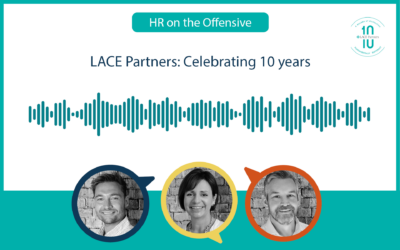On 21st April we ran a webinar called Creating the ‘new normal’. During the webinar we asked the senior HR professionals who attended – over 80 that took part – whether they had a transition plan in place to rebuild their workforce as the recovery gets underway.
89% of respondents did not have a transition plan in place – either they had no plan (26%) or they were still developing one (63%).
Perhaps these figures have changed in the 10 days since we ran our webinar, but the results show that HR teams need to be more on the front foot when it comes to planning for the transition.
Have you got it covered?
We have all been consumed with responding to the overwhelming operational and people impacts of Covid-19; the additional pressure for HR teams is probably like nothing they’ve experienced before. So it is understandable that thinking ahead to the next three to six months hasn’t taken priority. But, with the UK government announcing their plans to ease lockdown soon and other countries already returning to some semblance of normality, the time to plan ahead is NOW.
To help with this, we’ve developed a checklist for HR teams, to use to assess how ready they are for the gradual release of lockdown and the return to business as usual.
You can access the online interactive checklist here.
Now is the time to start the debate on how to manage the recovery with your leadership team because, whilst none of us expect a rapid recovery, there will be changes in a matter of days or weeks. We will be in a transition state in the immediate future and how you manage that transition will be a critical factor in how quickly your business recovers. Whilst lockdown has created huge challenges for us all, the challenges we will face in managing the transition are likely to outstrip this as we juggle evolving government guidelines, fragmented workforces and getting used to the ‘new normal’.
Is your workforce planning process agile enough?
The first step will be to work with the business to build out the products or services you will provide, where and when once lockdown is released. The phasing of the release isn’t confirmed yet in the UK so you will need to model for different scenarios. From this you will be able to determine how many people with which skills in which locations you need and when.
You need to be prepared for any established plans to change overnight – we have to be agile and responsive as guidelines change, including managing the risk of a second peak.
Phasing the return to work
Once you do have a view of the future workforce requirements, you can work through the people implications. For example, in which order do you bring furloughed workers back? How many people can you accommodate in your premises to allow for social distancing requirements? How will employees travel to work? What’s the fairest way of managing the return to work – can you ask for volunteers? The principles you use to phase people back to work need to be transparent, so everyone knows what’s going on and why.
What about those businesses that are operating across different countries? The timing and nature of how lockdown is being released varies widely. There can’t be a one-size fits all people transition approach for all locations and the majority of the decisions will need to be made local business leadership teams working with HR. But the way in which the transition is managed can still be guided by a business-wide set of principles that reflect the organisation’s value and behaviours.
Supporting line managers
During the crisis, the role of the line manager has become increasingly important in communicating with the workforce, engaging teams, monitoring wellbeing and raising people issues. During transition, line managers will be even more critical as we deal with a fragmented and evolving workforce with the mix of people at home, on furlough, on sick leave and at work premises changing on a regular basis. What support and guidance can you provide for line managers as they navigate through the transition? They will need practical guidance on how to deal with the people challenges they will face along with access to advice and reassurance.
Are you one of the 89% without a comprehensive plan?
If the answer is ‘yes’ then our checklist will help. Set aside time to work with your HR and business leadership team to build out your requirements and work through your options. Time is of the essence.
If you want some support, then we can help. We have already run a series of webinars that you can listen to which guide you through the process and explain our ’12 point crisis management plan’. We are releasing new videos which provide two minute snippets of each of the steps in the 12 point plan here. The checklist for your ‘return to work’ – what we call ‘thriving activities’ – is also listed at the top of this blog.
In addition to that we are also offering free workshops bespoke to your business where we will work with you to understand how prepared you are. If you would like to take advantage of these then just drop us an email – info@lacepartners.co.uk – and we will get back in touch with you directly.






